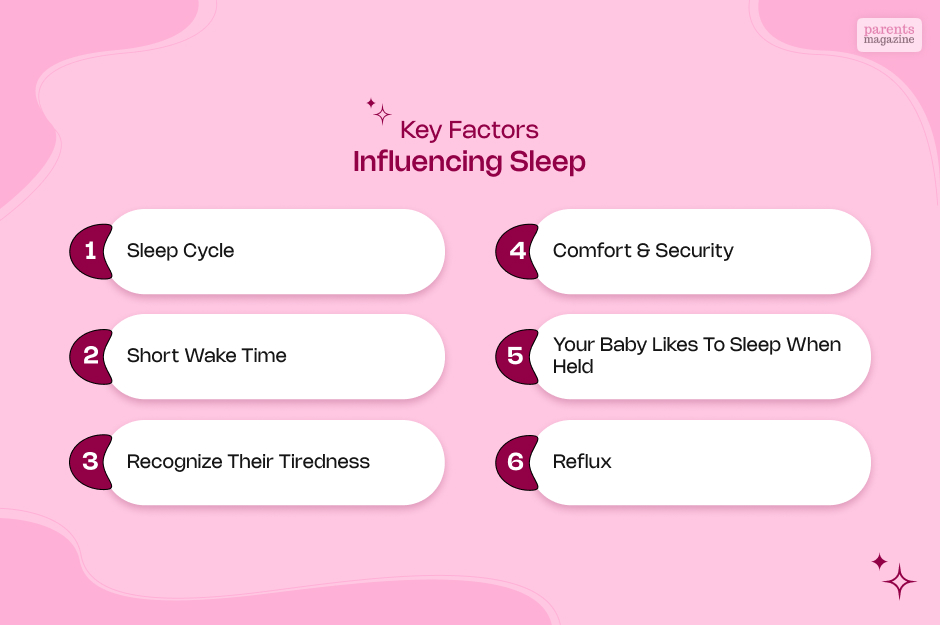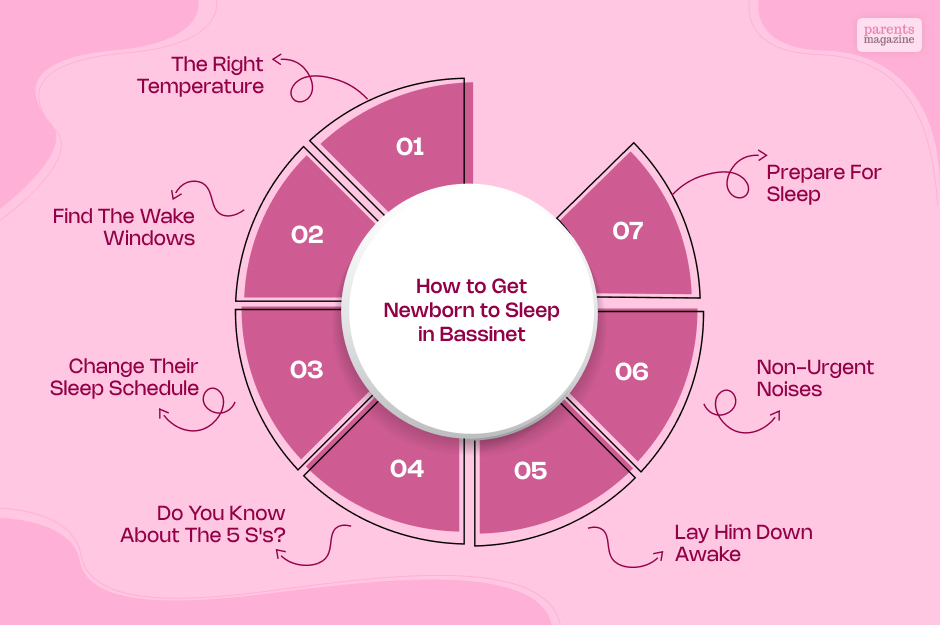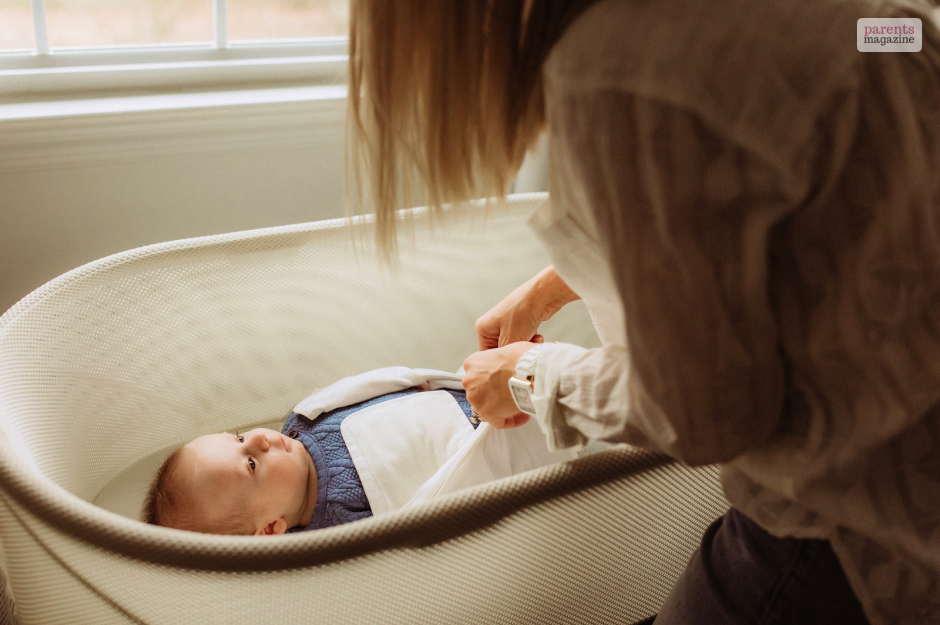
How to Get Your Newborn to Sleep Peacefully in a Bassinet: Proven Tips for Tired Parents
How to get a newborn to sleep in a bassinet?
It’s not easy. Yes, I’ve said it, and the sooner you admit it, the better for you. Right when you feel that the baby is fast asleep and you can tiptoe out of the room, you hear a shrill cry.
Yeah, he’s awake – right after you put him in the bassinet. So, you might be wondering, ‘Why won’t my baby sleep in their bassinet?’ Is something wrong with it? What to do when your baby won’t sleep in the bassinet?
If you are having all those questions, read this article. We have discussed different tips to put your baby to sleep in the bassinet faster than you imagined.
Understanding Your Newborn’s Sleep Needs
Sometimes, even having the best baby bassinet may not help you put the baby to sleep. Typically, newborns take around 16 to 18 hours of sleep every day. This sleep is broken down into 2 to 4 hours throughout the day. Yes, they don’t sleep at a stretch and have multiple wake windows throughout the day.
Key Factors Influencing Sleep

Sometimes, putting your little one to sleep in a bassinet feels almost impossible. There can be different reasons for that.
Sleep Cycle
First, one of the key factors here is a baby’s sleep cycle. Newborns have a better sleep cycle compared to adults. They often transition between light to deep sleep cycles. They may startle easily during light sleep and wake up.
Short Wake Time
Secondly, the wake time of a newborn is also short. They can stay awake for 45 minutes to an hour when sleeping deeply. They need another hour before they are ready to fall asleep again.
Recognize their Tiredness
Start by recognizing signs of tiredness. Your baby might show signs like yawning, fussiness, or rubbing their eyes when they are overtired. Overtiredness can disrupt their sleep as well.
Comfort & Security
Babies can easily go through the snug environment of the womb. But bassinet isn’t as snug as they used to feel inside their mother’s womb. It can make your baby feel insecure and restless, and the result is disrupted sleep.
Your Baby Likes to Sleep when Held
If your baby has developed a sleep habit while they are in your arms and your chest, then they may not want to fall asleep in the bassinet.
Reflux
If your baby has acid reflux and the acid is moving up and the wrong way into the oesophagus, then their sleep may get disturbed.
How to Get Newborn to Sleep in Bassinet

Now, with all these things affecting your baby’s sleep cycle, it’s easy to lose your mind. Yes, if you are thinking about how to put your newborn to sleep in the bassinet, you’re not alone.
In that case, you’ll have to find workarounds and find different ways to put them to sleep in a bassinet.
The Right Temperature
First, ensure that your baby has a sleeping room with the right temperature. When we say the right temperature for sleep, we are suggesting between 68 to 72 degrees Fahrenheit.
So, this shouldn’t feel too hot or too cold for your baby. Instead of dressing them in heavy clothing, dress them in layers.
If the weather is too cold, ensure to add one more layer than what feels close to comfortable. Do the opposite if it’s too warm. In the warmer weather, make sure to dress your baby in a short-sleeve cotton bodysuit.
Find the Wake windows.
Your baby stays awake for a specific amount of time throughout the day. When they are a month old, newborns only have sleep time of 3 to 4 hours a day. Most of the time, they spend sleeping.
However, your baby can stay awake for 40 minutes to 1 hour between each short sleep cycle. But how’s the wake window related to putting them to sleep on the bassinet? Well, when you find their wake window, you can put them on the bed before that window closest. This way you’ll help them build a sense of comfort and reliability to sleep on the bassinet.
Change their Sleep Schedule
Here’s another concern: is your baby reluctant to sleep in a bassinet, or do they just don’t want to sleep? It may not be the bassinet, but the sleep schedule that is bothering the baby.
It becomes more difficult when you want them to fall asleep within 30 to 60 minutes of trying to put them to sleep. But they show zero signs of fatigue and hardly fall asleep. If they are staying up quite late, then you must change your lights-out time. You can push it 15 minutes later every two to three nights.
But if this keeps up, they’ll stay awake at night and sleep during the day. In that case, adjust the light-out time to 15 minutes earlier.
Do You Know about the 5 S’s?
There’s a technique to put your baby to sleep. It’s called the 5 S’s. First, swaddle the baby. Wrap the baby in warm clothing to mimic the feeling of the womb. Then, hold them on the side or stomach position to help with quick digestion.
Next, Cushing (creating white noise) helps you put your baby to sleep. At this point, your baby should feel comfortable and drowsy. Now, try swaying them, which is the 4th of the five s’s. Swaying will help create a rhythm that puts them to sleep. You can offer the baby a pacifier and let them suck it, which brings you to the 5th of the S’s for soothing the baby to sleep.
Lay Him Down Awake
Here’s where you might be making a mistake. If you put your baby on the bassinet while they’re asleep, it might startle them. The worst-case scenario? Your baby will wake up. The best way to make this transition easier is by putting them in the bassinet when they are drowsy and ready to fall asleep.
After putting them in the bassinet, stay beside them and sway them until your baby falls asleep. Wait, did the baby fall asleep yet? Gently tickle the little one to check if he’s asleep. If his eyes aren’t opening, then it’s your time to tiptoe out of the room.
Non-Urgent Noises
It’s common for babies to grunt, make noises, and cry during sleep. No, these noises don’t mean that he’s waking up. Babies whimper, make grunting noises, or cry during sleep. It’s often common for them during sleep. But, as a mother or caregiver, you’ll know which noises urgent and which ones are to ignore.
Prepare for Sleep
Don’t put your baby to sleep right after feeding them. This can cause reflux. Then how do you tackle this? Keep them seated for around 20 to 30 minutes to fight off acid reflux. Also, burp your baby before putting them to sleep. This way of feeding keeps the food in the baby’s stomach and reduces the chances of reflux.
Preparing the Bassinet for Comfort

How to get a newborn to sleep in a bassinet? Once you follow the steps mentioned above, you’ll have your own process. Most babies tend to respond to these techniques. But aside from trying all those tips, ensure a bassinet is set for your baby’s healthy sleep.
- Create a comfortable sleeping environment by using a firm mattress that fits the bassinet snugly without any gaps.
- Don’t use too much cushioning to make the bedding. This can make the baby feel suffocated when sleeping.
- Keep the room temperature at a controlled level.
- Set up a dark environment for comfortable sleep.
- Also, you can use a white noise machine to put your baby to sleep.
- Change their wet diaper before putting them to bed.
- Gently perfect the sleep timing to put your baby to sleep in the bassinet.
When to Consult a Pediatrician About Sleep Difficulties
If you’ve tried various strategies and your newborn continues struggling with sleeping in their bassinet after several weeks, it may be time to consult a pediatrician:
- If you notice persistent signs of distress during sleep.
- When there are concerns about feeding issues affecting sleep.
- If you suspect underlying medical conditions such as reflux or allergies impacting their ability to settle comfortably.
Conclusion
You can get your baby to sleep peacefully in a bassinet just by changing a few things, and it starts with understanding their sleep cycles. By understanding your unique needs, you can establish a good and comfortable environment for sleep. Attend to their wake windows and help establish a good sleep routine.
Remember that patience is key; every baby is different and may require time and experimentation before finding what works best for them. With persistence and love, you’ll create an inviting space where your newborn feels safe and secure while sleeping in their bassinet.
This May Help You:
Already have an account?
Sign In
Create your account
User added successfully. Log in








